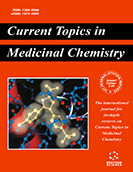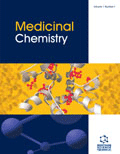Abstract
Purpose: Accumulated evidence have well established that protein sumoylation plays multiple roles in various cellular processes. In the vertebrate eye, we and others have demonstrated that sumoylation displays indispensable roles in regulating eye development. Various ocular cell lines including human embryonic cell line (FHL124), the SV40-large T-transformed human lens epithelial cell line (HLE), the SV40-large T-transformed mouse lens epithelial cell line (αTN4-1), the rabbit lens epithelial cell line (N/N1003A) and the human retina pigment epithelial cell line (ARPE-19) have been extensively used for studying various cellular functions and disease processes including sumoylation functions, and mechanisms for cataract and age-related macular degeneration (AMD). However, the sumoylation enzyme systems have not been well established.
Methods: FHL124, HLE, αTN4-1, N/N1003A and ARPE-19 were cultured in Dulbecco’s modified eagle medium (DMEM) containing 10% FBS and 1% penicillin & streptomycin. The expression levels of seven SENP mRNAs were analyzed with qRT-PCR, and the expression levels of seven SENP proteins were detected with Western blot analysis.
Results: Using both qRT-PCR and Western blot analysis, we have obtained the followings: 1). The 3 human ocular cell lines, FHL124, HLE and ARPE-19 express all types of SENP mRNA and proteins. 2). In mouse lens epithelial cell line αTN4-1, and rabbit lens epithelial cells line N/N1003A, however, only the mRNAs for SENP1, 2, 3, 6 and 7 are expressed. At the protein level, SENP8 was absent in both αTN4-1 and N/N1003A cells; 3). Each cell line has different dominant SENP enzymes. For FHL124, SENP3, 5, 7 and 8 proteins are relatively dominant. SENP3, 5 and 6 are the major de-sumoylation enzymes in HLE cells. Different from human lens epithelial cells, FHL124 and HLE, human retina pigment epithelial cells (ARPE-19) have SENP3, 7, and 8 as the dominant forms of de-sumoylation enzymes. For mouse lens epithelial cells, SENP1, 3 and 7 are the major de-sumoylation enzymes. On the other hand, the rabbit lens epithelial cells have SENP1, 2 and 7 as the major isoforms.
Conclusion: Our results for the first time defined the differential expression patterns of the seven types of de-sumoylation enzymes (SENPs) in 5 major ocular cell lines. These results help to establish the basis for the future study of sumoylation functions and the related mechanisms in vertebrate eye.
Keywords: SENP, FHL124, HLE, αTN4-1, N/N1003A, ARPE-19, De-sumoylation.
Current Molecular Medicine
Title:Determination of Expression Patterns of Seven De-sumoylation Enzymes in Major Ocular Cell Lines
Volume: 18 Issue: 9
Author(s): Yunfei Liu, Lan Zhang, Xiangcheng Tang, Fangyuan Liu, Jia-Ling Fu, Xiao-Dong Gong, Ling Wang, Qian Nie, Jia-Wen Xiang, Yuan Xiao, Yizhi Liu* David Wan-Cheng Li*
Affiliation:
- The State Key Laboratory of Ophthalmology, Zhongshan Ophthalmic Center, Sun Yat-sen University, #7 Jinsui Road, Guangzhou, Guangdong 510230,China
- The State Key Laboratory of Ophthalmology, Zhongshan Ophthalmic Center, Sun Yat-sen University, #7 Jinsui Road, Guangzhou, Guangdong 510230,China
Keywords: SENP, FHL124, HLE, αTN4-1, N/N1003A, ARPE-19, De-sumoylation.
Abstract: Purpose: Accumulated evidence have well established that protein sumoylation plays multiple roles in various cellular processes. In the vertebrate eye, we and others have demonstrated that sumoylation displays indispensable roles in regulating eye development. Various ocular cell lines including human embryonic cell line (FHL124), the SV40-large T-transformed human lens epithelial cell line (HLE), the SV40-large T-transformed mouse lens epithelial cell line (αTN4-1), the rabbit lens epithelial cell line (N/N1003A) and the human retina pigment epithelial cell line (ARPE-19) have been extensively used for studying various cellular functions and disease processes including sumoylation functions, and mechanisms for cataract and age-related macular degeneration (AMD). However, the sumoylation enzyme systems have not been well established.
Methods: FHL124, HLE, αTN4-1, N/N1003A and ARPE-19 were cultured in Dulbecco’s modified eagle medium (DMEM) containing 10% FBS and 1% penicillin & streptomycin. The expression levels of seven SENP mRNAs were analyzed with qRT-PCR, and the expression levels of seven SENP proteins were detected with Western blot analysis.
Results: Using both qRT-PCR and Western blot analysis, we have obtained the followings: 1). The 3 human ocular cell lines, FHL124, HLE and ARPE-19 express all types of SENP mRNA and proteins. 2). In mouse lens epithelial cell line αTN4-1, and rabbit lens epithelial cells line N/N1003A, however, only the mRNAs for SENP1, 2, 3, 6 and 7 are expressed. At the protein level, SENP8 was absent in both αTN4-1 and N/N1003A cells; 3). Each cell line has different dominant SENP enzymes. For FHL124, SENP3, 5, 7 and 8 proteins are relatively dominant. SENP3, 5 and 6 are the major de-sumoylation enzymes in HLE cells. Different from human lens epithelial cells, FHL124 and HLE, human retina pigment epithelial cells (ARPE-19) have SENP3, 7, and 8 as the dominant forms of de-sumoylation enzymes. For mouse lens epithelial cells, SENP1, 3 and 7 are the major de-sumoylation enzymes. On the other hand, the rabbit lens epithelial cells have SENP1, 2 and 7 as the major isoforms.
Conclusion: Our results for the first time defined the differential expression patterns of the seven types of de-sumoylation enzymes (SENPs) in 5 major ocular cell lines. These results help to establish the basis for the future study of sumoylation functions and the related mechanisms in vertebrate eye.
Export Options
About this article
Cite this article as:
Liu Yunfei , Zhang Lan , Tang Xiangcheng , Liu Fangyuan , Fu Jia-Ling , Gong Xiao-Dong , Wang Ling, Nie Qian , Xiang Jia-Wen , Xiao Yuan, Liu Yizhi *, Li Wan-Cheng David *, Determination of Expression Patterns of Seven De-sumoylation Enzymes in Major Ocular Cell Lines, Current Molecular Medicine 2018; 18 (9) . https://dx.doi.org/10.2174/1566524019666190107153440
| DOI https://dx.doi.org/10.2174/1566524019666190107153440 |
Print ISSN 1566-5240 |
| Publisher Name Bentham Science Publisher |
Online ISSN 1875-5666 |
 43
43 7
7 2
2
- Author Guidelines
- Bentham Author Support Services (BASS)
- Graphical Abstracts
- Fabricating and Stating False Information
- Research Misconduct
- Post Publication Discussions and Corrections
- Publishing Ethics and Rectitude
- Increase Visibility of Your Article
- Archiving Policies
- Peer Review Workflow
- Order Your Article Before Print
- Promote Your Article
- Manuscript Transfer Facility
- Editorial Policies
- Allegations from Whistleblowers

















.jpeg)








